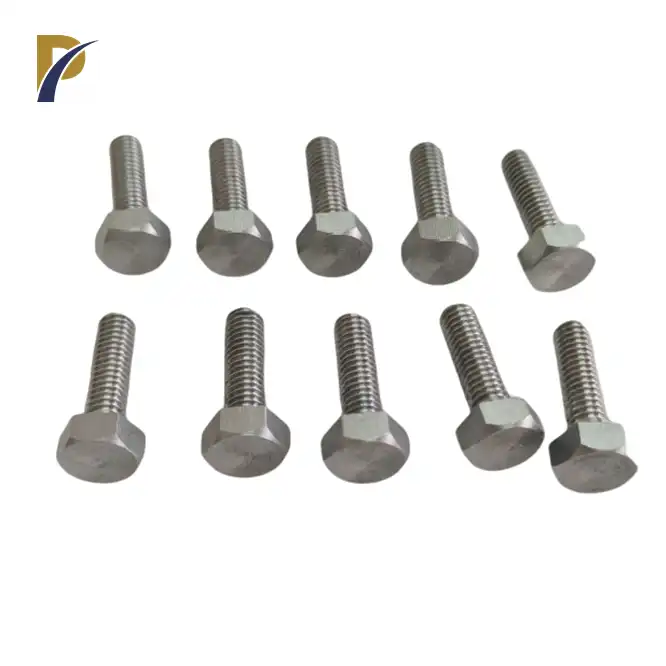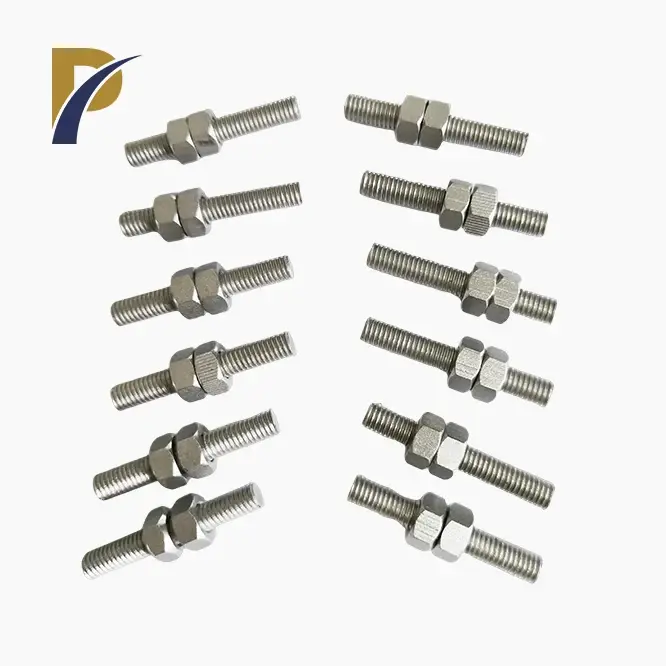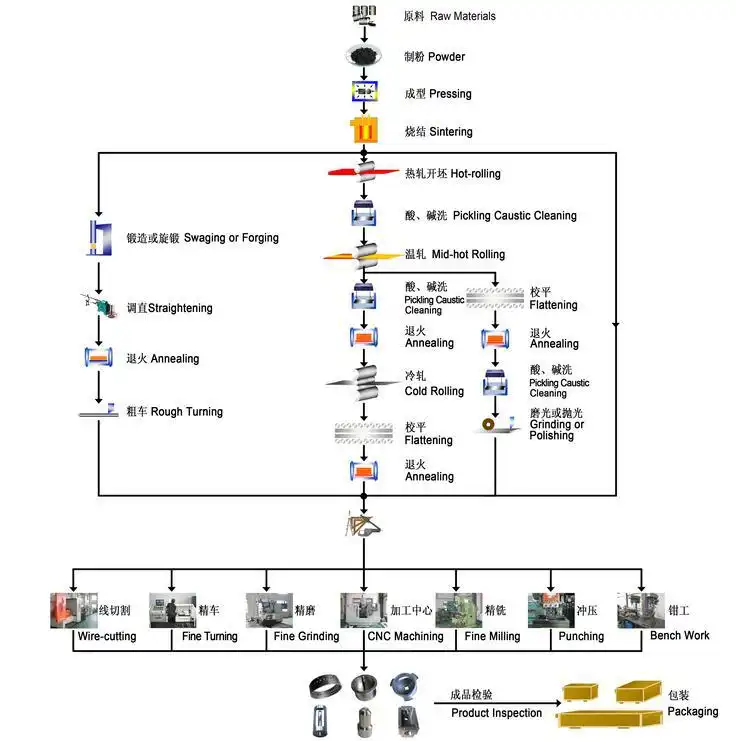The Significance of Precision in Molybdenum Threaded Rods
Unmatched Material Properties
Molybdenum threaded rods offer a unique combination of physical and chemical properties that make them invaluable in demanding environments. With a melting point exceeding 2600°C, molybdenum retains strength and stability even under intense heat. Its excellent thermal conductivity ensures efficient heat dissipation, while the low thermal expansion coefficient minimizes dimensional distortion. Furthermore, its corrosion resistance and high strength-to-weight ratio make it particularly suitable for aerospace, semiconductor, and nuclear applications, where both precision and material resilience are critical to system integrity.
Dimensional Stability
Dimensional stability is a critical attribute of high-purity molybdenum threaded rods, especially for applications exposed to thermal cycling or high mechanical stress. Unlike many conventional metals, molybdenum resists warping, elongation, or contraction, maintaining its original geometry even under extreme operational conditions. This characteristic ensures secure, long-lasting threaded connections and alignment in high-precision assemblies. Whether used in ultra-high vacuum systems, aerospace fixtures, or precision instrumentation, molybdenum’s ability to preserve dimensional consistency directly contributes to system accuracy and performance over time.
Tolerance Control
Precision manufacturing of molybdenum threaded rods involves stringent tolerance control to meet the exacting demands of advanced engineering applications. Using techniques such as CNC threading, in-process gauging, and post-machining inspections, manufacturers ensure consistency across all critical dimensions. Maintaining precise thread pitch, major and minor diameters, and straightness is vital for achieving proper mechanical engagement and minimizing assembly errors. This level of precision ensures a perfect fit and function, especially in sensitive systems where even minor deviations could lead to performance failures or misalignments.
 |
 |
Manufacturing Processes for Precise Molybdenum Threaded Rods
Material Purification
The production of precise molybdenum threaded rods starts with achieving ultra-high material purity. Techniques such as electron beam melting and zone refining are employed to eliminate metallic and non-metallic impurities, raising purity levels to 99.95% or higher. This high-purity molybdenum ensures uniform grain structure, reduced brittleness, and improved performance in demanding environments. Consistent chemical composition across batches also helps maintain mechanical properties, thermal stability, and corrosion resistance—key factors for threaded rods used in aerospace, semiconductor, and high-temperature industrial applications.
Precision Machining
Following purification, the molybdenum material undergoes precision machining using advanced CNC equipment. These machines are capable of operating within extremely tight tolerances, often as precise as ±0.0005 inches. This level of control ensures dimensional consistency across the entire production run. The machining process includes turning, milling, and drilling to achieve the desired rod diameter and geometry. Coolant systems and special tooling are typically used to handle molybdenum’s density and brittleness, preventing micro-cracking while delivering a smooth, defect-free finish essential for threading operations.
Thread Forming Techniques
Creating threads on molybdenum rods requires specialized techniques tailored to the metal’s hardness and low ductility. Thread rolling, where threads are formed by displacing material, is ideal for improving fatigue strength and surface finish. Alternatively, thread grinding ensures precise thread geometry for applications demanding tight tolerances and superior surface integrity. Both methods are performed under strict process controls to prevent chipping or distortion. The result is a highly accurate and mechanically robust threaded rod suitable for critical assemblies in vacuum systems, electronics, and aerospace technologies.

Critical Dimensions and Tolerances in Molybdenum Threaded Rods
Thread Profile and Pitch
Thread profile and pitch are foundational aspects of high-purity molybdenum threaded rods, directly impacting assembly compatibility and load distribution. Standard profiles, such as Unified Thread Standard (UTS) and Metric, are selected based on the application’s engineering requirements. Fine-pitch threads are especially suited for precision assemblies, offering improved thread engagement, reduced backlash, and better load-carrying capacity. Manufacturers rely on thread gauges, optical comparators, and CNC programming to maintain pitch accuracy and flank angle precision, ensuring seamless integration with mating components in high-tolerance systems.
Major and Minor Diameters
The major diameter (outermost thread crest) and minor diameter (innermost root) define the fundamental size and thread depth of a molybdenum threaded rod. These dimensions are held to extremely tight tolerances—often within ±0.001 inches—to guarantee fitment accuracy and mechanical reliability. Variations in these diameters can lead to improper thread engagement, stripping, or misalignment in high-performance assemblies. Precision metrology tools such as micrometers, thread ring gauges, and coordinate measuring machines (CMMs) are employed to verify dimensional conformity throughout production.
Length and Straightness
Accurate length and exceptional straightness are essential for molybdenum threaded rods used in high-precision mechanical or structural applications. Length is typically machined and verified to tolerances as tight as ±0.01 mm, depending on the specification. Straightness ensures proper axial alignment and even load distribution, preventing deflection or binding during installation. Rods are checked using straight edges, dial indicators, and laser alignment tools to ensure deviation does not exceed 0.001 inches per inch. This precision is vital for stability and alignment in precision frameworks or vacuum systems.
Conclusion
Exact molybdenum threaded rod dimensions are paramount in precision projects across various industries. The unique properties of molybdenum, combined with advanced manufacturing techniques, allow for the creation of threaded rods with unparalleled dimensional stability and performance. By understanding the critical dimensions and tolerances involved in molybdenum threaded rods, engineers and designers can harness the full potential of this remarkable material. As technology continues to advance, the demand for high-precision components like molybdenum threaded rods will only increase, driving further innovations in manufacturing and quality control processes.
Contact Us
For more information about our high-quality molybdenum threaded rods and how they can benefit your precision projects, please contact us at info@peakrisemetal.com. Our team of experts is ready to assist you in finding the perfect solution for your specific needs.
